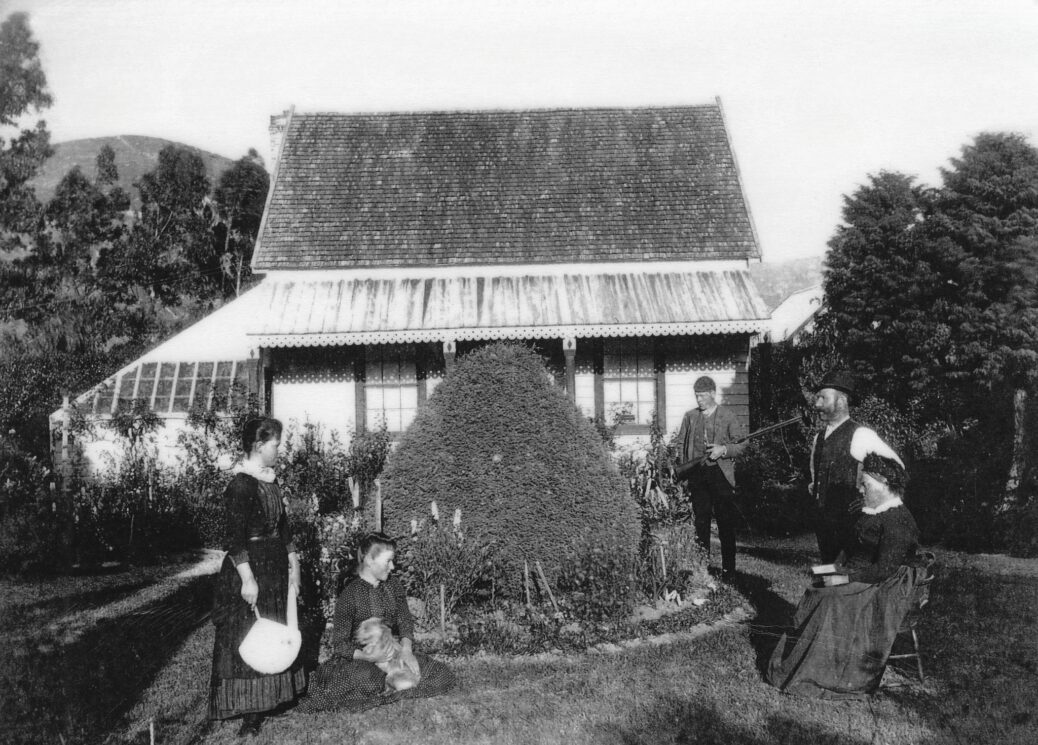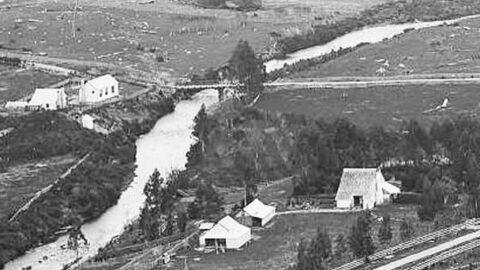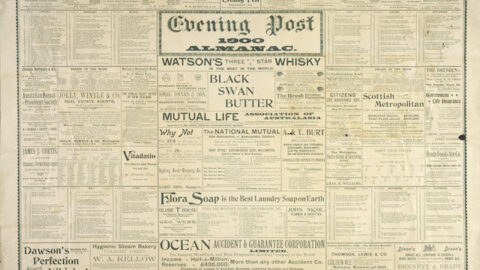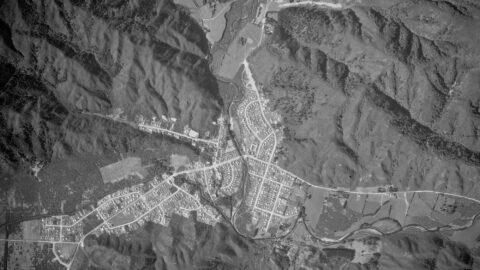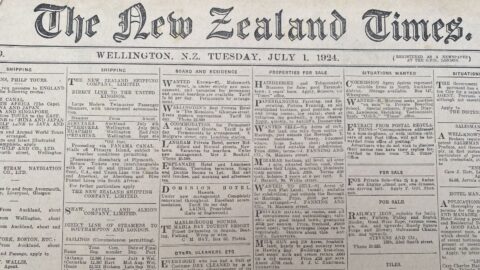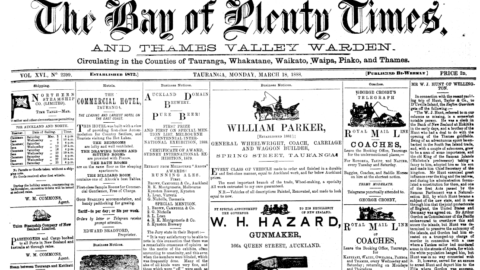The McIlvride family outside their home, with the Hine Road hillside in the background. Left to right: Catherine, Elizabeth, Isabella, John, and Peter who is holding a shotgun. The house features a tōtara shingle roof, and the mature trees surrounding it suggest the property may date back to the 1860s.
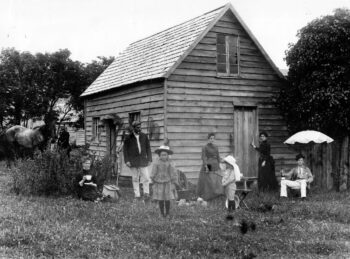 The McIlvride family holds a notable place in the early European settlement history of Wainuiomata. Their roots trace back to Muthill, Perthshire, Scotland. John McIlvride, born in 1833, emigrated to New Zealand in the mid-19th century, settling in Wainuiomata around 1856 with his wife, Mary Isabella McGregor. They established a 20-acre farm that also served as the local post office, with their daughter Christina undertaking mail deliveries on horseback to Lower Hutt from the age of twelve.
The McIlvride family holds a notable place in the early European settlement history of Wainuiomata. Their roots trace back to Muthill, Perthshire, Scotland. John McIlvride, born in 1833, emigrated to New Zealand in the mid-19th century, settling in Wainuiomata around 1856 with his wife, Mary Isabella McGregor. They established a 20-acre farm that also served as the local post office, with their daughter Christina undertaking mail deliveries on horseback to Lower Hutt from the age of twelve.
John McIlvride (1833 – 1906)
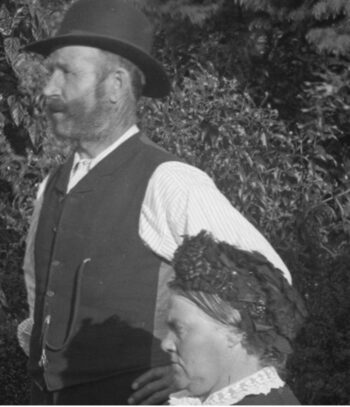 John McIlvride (1833–1906) was a Scottish immigrant who became a foundational figure in Wainuiomata’s early European settlement. Born on April 18, 1833, in Muthill, Perthshire, Scotland, he married Mary Isabella McGregor in 1855 before emigrating to New Zealand. By the late 1850s, the couple had established their home and farm in Wainuiomata, naming their property “Balloch” after a village in Scotland. Located at approximately 34 Moores Valley Road today, Balloch served as both a family residence and a community hub.
John McIlvride (1833–1906) was a Scottish immigrant who became a foundational figure in Wainuiomata’s early European settlement. Born on April 18, 1833, in Muthill, Perthshire, Scotland, he married Mary Isabella McGregor in 1855 before emigrating to New Zealand. By the late 1850s, the couple had established their home and farm in Wainuiomata, naming their property “Balloch” after a village in Scotland. Located at approximately 34 Moores Valley Road today, Balloch served as both a family residence and a community hub.
The McIlvride property evolved to include a general store, post office, and tearooms, becoming an essential part of the growing rural community. John was active in local affairs, leasing parts of his land to settlers like James Burrow, who later became the local postmaster.
After Mary Isabella’s death in 1899, John remarried Selina Williams in 1901. He passed away on February 10, 1906, in Wellington and was buried at Karori Cemetery.
Christina McIlvride (1860–1951)
 Born in Wainuiomata in 1860, Christina McIlvride married Richard Prouse, a member of a prominent local sawmilling family. From the age of 12, she rode horseback twice a week over the hill to Lower Hutt to deliver and collect mail, a round trip of nearly 30 kilometres. If someone in the valley was unwell, she would make the same journey to fetch the doctor.
Born in Wainuiomata in 1860, Christina McIlvride married Richard Prouse, a member of a prominent local sawmilling family. From the age of 12, she rode horseback twice a week over the hill to Lower Hutt to deliver and collect mail, a round trip of nearly 30 kilometres. If someone in the valley was unwell, she would make the same journey to fetch the doctor.
In 1879, at the age of 19, she married Richard, and in 1891 the couple moved to Levin, where the Prouse brothers established a new sawmill. Given the hazardous nature of sawmilling and remote living, Christina took it upon herself to learn how to treat injuries and illnesses. Over time, she became a trusted nurse and midwife, believed to have delivered hundreds of babies. Known affectionately as “Granny Prouse,” she earned deep respect for her tireless care and community service.
 During World War I, she served as Matron of the Weraroa Soldiers’ Hospital and later as Sub-Matron of the local Influenza Hospital during the 1918 pandemic. Christina was also passionate about conservation. Her efforts to protect native bushland helped lead to the creation of the Prouse Bush Reserve in Levin, perhaps a quiet response to the environmental impact of her husband’s work in logging forests in Wainuiomata and Levin.
During World War I, she served as Matron of the Weraroa Soldiers’ Hospital and later as Sub-Matron of the local Influenza Hospital during the 1918 pandemic. Christina was also passionate about conservation. Her efforts to protect native bushland helped lead to the creation of the Prouse Bush Reserve in Levin, perhaps a quiet response to the environmental impact of her husband’s work in logging forests in Wainuiomata and Levin.
Grace McIlvride
Grace married Alexander McGregor Mackenzie and moved to India. Correspondence between Grace and her sister Christina reveals a complex family dynamic, including long-standing feuds among the McIlvride siblings. These letters provide insight into the personal relationships and challenges within the family.
Peter John McIlvride (1874–1954)
The youngest child of John and Mary Isabella McIlvride, Peter John pursued a career in electrical engineering, working as an electrical fitter and later as a railways signal and electrical inspector for the Government Railway Department. He married Florence Ellen Maplesden in 1903, with whom he had two children. After Florence’s death, he married Ivy Beda Willard in 1925, and they had four children. Peter John’s professional contributions were significant in the development of New Zealand’s railway infrastructure.
Credits
Special thanks to Carl Smith for some information in this article.

